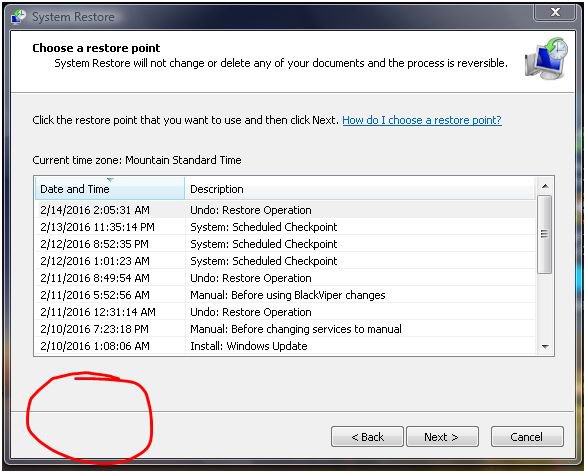

One thing to remember about system restore, it will remove things you added recently but it cant bring back something that has been deleted so if you delete or uninstall the wrong thing and your trying to get your files back or a program quits working on you, system restore cant help you. The Windows Automatic Backup creates restore points periodically that reflect changes you have made to your system. then i reboot and open system restore which prompts me to turn it on so i do then reset the abount of space/restore points i want. To turn it on or off you open it and to the left side it says "system restore settings" so open it and select to turn off system restore and apply. i keep mine set on the first notch which for a 320gb hdd is around 3-4gb of space dedicated to restore file space and it gives me 7-8 dates for restore points which is plenty since i pick a restore date that only go back one or two days anyway.

default uses a lot of disk space and can have around 15+ seperate dates to select as restore points. it keeps certain restore points according to the disk space usage limits you set for it. To answer your other question, I do not know of any way to backup these restore points, but there are other methods to backup the entire hard drive, here is a free utility that can do this.All system restore is like a backup copy of your "c" drive so it can "restore" it to the way it was before you screwed it up or got a virus. If System Restore is corrupted, I prefer the first method to insure it works properly the next time you need it. There is another method to clean out all but the most recent restore point, see method 2 in this article,

Windows System Restore is not a perfect way to backup your system but is handy when you just want to roll back a software or Windows Update installation, and does have problems when the restore file becomes corrupted due to many restore points and other problems.

System restore can become corrupted after time, one way to keep this in check is to occasionally turn off system restore and then turn it back on, then immediately make a manual restore point, the only downside to doing this is you will lose all previous restore points. They are stored in a hidden folder called System Volume Information on the root of the C drive.


 0 kommentar(er)
0 kommentar(er)
